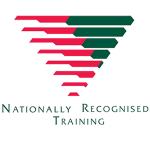Course Outline
The Advanced Resuscitation course conducted by SETS Enterprises is is a nationally accredited course that is designed to provide students with the essential knowledge and skills to allow them to provide initial advanced resuscitation to, across a variety of industries. The course covers the following broad areas:
- DRSABCD and the guidelines set forth by the Australian Resuscitation Council.
- The use of airway management equipment.
- Oxygen equipment for therapy, resuscitation and suction as well as maintenance.
- Use of an Automatic External Defibrillator.
- Visual and verbal assessment techniques.
- Casualty vital sign collection (respiration, pulse & temperature).
- Managing casualties with life threatening bleeding.
- Incident debriefing and evaluation.
- Verbal and written incident reporting.

Course Structure
This course may be conducted at either our SETS Enterprises training facility or your workplace. This course is delivered through a combination of classroom learning, small group discussion and practical activities in either a simulated or workplace setting.
Students who attend and successfully meet all assessment requirements of the course will receive a nationally recognised statement of attainment with the following unit of competency: HLTAID015 Provide advanced resuscitation and oxygen therapy. Attainment of this unit will also automatically include HLTAID009 Provide cardiopulmonary resuscitation.
There is a maximum number of 10 participants per program.
To meet the course requirements, students must:
- Have sufficient English language, literacy and numeracy skills to read instructions and write assessments
- Be physically able to kneel and perform CPR on the floor, uninterrupted for at least 2 minutes (multiple times)
- Provide their USI on enrolment
- Provide proof of identity, e.g. drivers licence
- Wear or bring long sleeve, long pants and closed in shoes
HLTAID011 Provide First Aid
Students are required to be able to complete the following tasks:
- communicate with others clearly and concisely, verbally and in writing
- find and use relevant information
- read and comply with work instructions and specifications
- read and record measurements
- record and report information neatly and legibly
